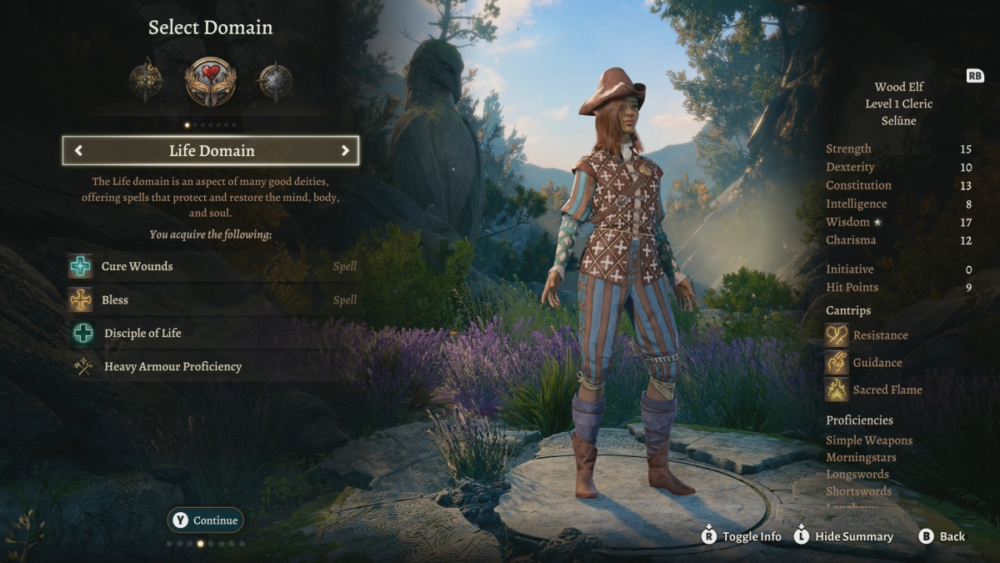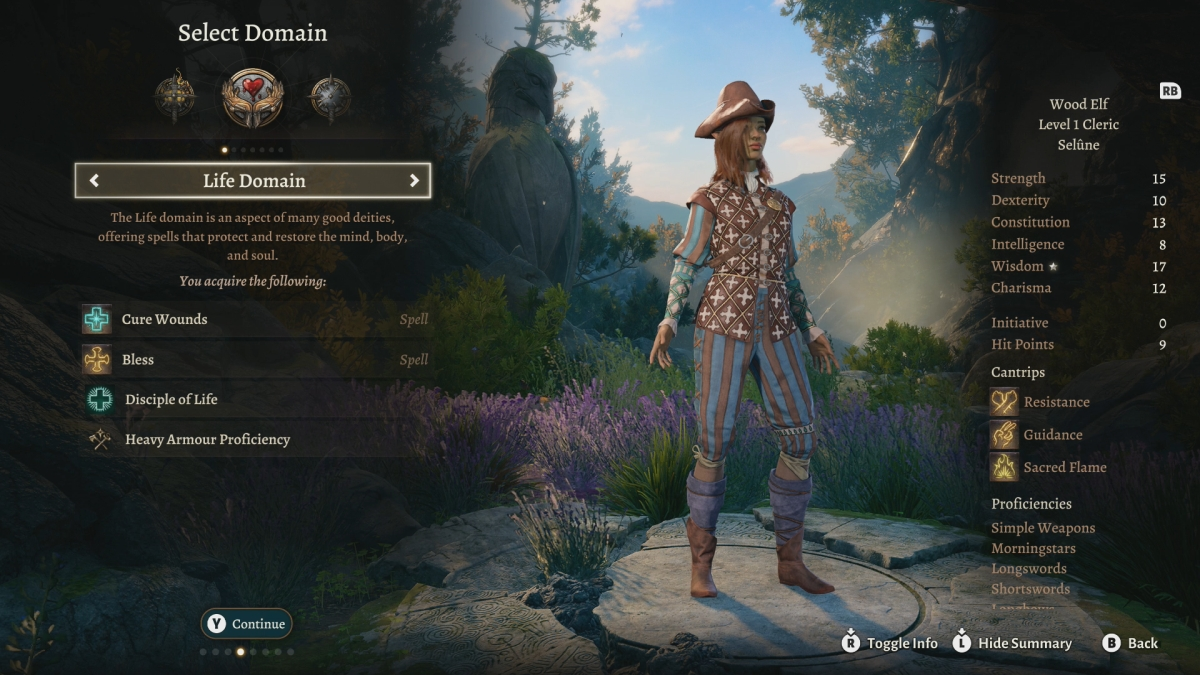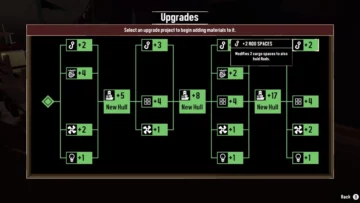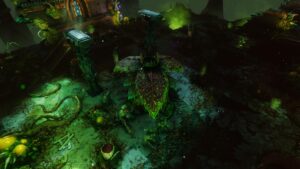In Baldur’s Gate 3, most classes have a choice of three subclasses they can use to specialize. There are exceptions, including the Cleric class. It has seven options for specialization. Here is our guide ranking the seven Cleric subclasses in Baldur’s Gate 3 from best to worst.
Baldur’s Gate 3 – best Cleric subclasses, ranked
You get to choose your Cleric subclass (known as a ‘Domain’) right from the start. In general, the Cleric is a healer and focuses more on defensive skills, though you can find some subclasses that turn their eye toward offensive capabilities (especially as they develop over the course of the campaign). Whatever you decide, make sure to select the Cleric subclass that complements your favored approach.
1. Life Domain
This subclass ensures you have a Cleric in its purest form. Thanks to the Disciple of Life ability, your healing magic gains additional proficiency the higher your character level. The Cure Wounds spell you already possess improves, plus you gain Heavy Armour Proficiency. That keeps you around to provide healing for longer without suffering a disadvantage while attacking. At higher levels, your healing magic continues to improve and you learn Revivify to assist those who have fallen in battle.
2. Tempest Domain
There’s a storm on the battlefield when you choose this subclass. Wrath of the Storm provides lightning damage, and the powerful Thunderwave spell has a similar effect. Meanwhile, Fog Cloud puts foes at a disadvantage if your party members want to take a stealthy approach. Besides all of that, you enjoy Martial Weapon Proficiency and Heavy Armour Proficiency, which allows you to remain a threat to your enemies long after weaker party members would fall. As offensive subclasses go, this one gives you the most versatility.
3. War Domain
As one of several subclasses that provide Heavy Armour Proficiency, this one stands apart from the others by also adding Martial Weapon Proficiency. The useful War Priest ability lets you land an extra attack in exchange for a charge, and you can use Divine Favor to enhance your weapons. You are an adversary to the unrighteous, unafraid to wade into the thick of battle. If you want a purely offensive Cleric, this is your most straightforward option. It just may not have as many relevant options against some foes compared to the Tempest subclass.
4. Nature Domain
This subclass still provides Heavy Armour Proficiency, but much of the focus is on abilities you would associate with the Druid class. You even gain the Speak with Animals and Animal Friendship spells. Also, the Acolyte of Nature ability lets you learn a Druid cantrip right from the start, to go along with the powerful Shillelagh cantrip. At higher levels, you can attack with ice and locusts, a development your foes are unlikely to welcome. These are nice perks, but not as broadly useful as super effective healing magic.
5. Light Domain
Despite losing proficiency with heavier armour, this class attempts to make up for it with powerful spells centered around light and fire. Stealthier foes will have a harder time managing sneak attacks from the shadows, thanks to Daylight (a spell learned at level five). Radiance of the Dawn allows the Cleric to attack with holy light and deal Radiant damage, nearly from the start. It all fits the spirit of being a Cleric, and there are definite advantages to the approach, but it’s not hugely useful compared to some superior options.
6. Knowledge Domain
This subclass enhances the power of the Command spell and adds the Sleep spell. Those are both useful spells. At level two, it adds Knowledge of the Ages, which ensures proficiency in a variety of skills. Essentially, the subclass works best when controlling the minds of adversaries and sowing confusion and fear on the battlefield.
7. Trickery Domain
As one of three subclasses without strong defensive capabilities, this one makes up for it with Blessing of the Trickster. The action adds stealth capabilities to another party member. Additionally, the Charm Person and Disguise Self spells add depth to a Cleric that has basically gone Rogue. Since there are already other classes (including the Rogue itself) that handle that side of things, a Trickery approach feels like a bit of a waste when the Cleric has so many other options at its disposal.
We’ve ranked the subclasses above, but any Cleric subclass provides reason to give it a try. Choose the subclass that best suits your style of play. And if you change your mind, check our guide on how to respec your characters with a little help from Withers.
Baldur’s Gate 3 is available on Steam.
- SEO Powered Content & PR Distribution. Get Amplified Today.
- PlatoData.Network Vertical Generative Ai. Empower Yourself. Access Here.
- PlatoAiStream. Web3 Intelligence. Knowledge Amplified. Access Here.
- PlatoESG. Automotive / EVs, Carbon, CleanTech, Energy, Environment, Solar, Waste Management. Access Here.
- PlatoHealth. Biotech and Clinical Trials Intelligence. Access Here.
- ChartPrime. Elevate your Trading Game with ChartPrime. Access Here.
- BlockOffsets. Modernizing Environmental Offset Ownership. Access Here.
- Source: https://www.pcinvasion.com/best-cleric-subclasses-in-baldurs-gate-3-ranked-bg3/
- 1
- a
- abilities
- ability
- above
- Action
- add
- adding
- Additional
- Additionally
- adds
- advantages
- after
- Against
- All
- allows
- along
- already
- also
- an
- and
- Another
- any
- apart
- approach
- ARE
- around
- as
- associate
- At
- attacks
- attempts
- available
- Baldur's Gate
- Battle
- Battlefield
- being
- besides
- BEST
- Bit
- both
- broadly
- but
- by
- Campaign
- CAN
- capabilities
- Center
- change
- character
- charge
- choice
- choose
- class
- classes
- compared
- confusion
- continues
- controlling
- course
- damage
- deal
- decide
- defensive
- depth
- develop
- Development
- domain
- Effect
- Effective
- enhance
- Enhances
- enjoy
- ensures
- especially
- Essentially
- even
- exchange
- eye
- fall
- Fear
- find
- Fire
- Fits
- Focus
- focuses
- For
- form
- from
- gain
- gains
- General
- Get
- give
- gives
- go
- gone
- guide
- handle
- harder
- has
- Have
- healing
- help
- here
- higher
- HTTPS
- hugely
- ICE
- if
- improve
- in
- Including
- into
- Is
- IT
- ITS
- itself
- jpg
- just
- knowledge
- known
- Land
- LEARN
- learned
- Level
- levels
- Life
- light
- lightning
- like
- Little
- Long
- longer
- losing
- Magic
- make
- MAKES
- managing
- many
- May
- Meanwhile
- member
- Members
- mind
- minds
- more
- most
- much
- nature
- nearly
- Nice
- not
- of
- offensive
- on
- One
- Option
- Options
- Other
- Others
- our
- over
- Party
- PC
- perks
- plato
- plato data intelligence
- platodata
- platogaming
- play
- Plus
- possess
- power
- powerful
- Provide
- provides
- purely
- Ranked
- ranking
- reason
- relevant
- remain
- right
- Rogue
- s
- seven
- several
- side
- similar
- since
- skills
- sneak
- So
- some
- spirit
- stands
- start
- Stealth
- stealthy
- still
- Storm
- straightforward
- strong
- style
- suffering
- super
- superior
- sure
- Take
- thanks
- that
- The
- their
- there
- These
- they
- things
- this
- those
- though
- threat
- three
- time
- to
- toward
- true
- try
- turn
- two
- unlikely
- up
- use
- variety
- versatility
- want
- war
- waste
- weapons
- welcome
- whatever
- when
- while
- WHO
- will
- with
- without
- works
- worst
- would
- you
- your
- zephyrnet













